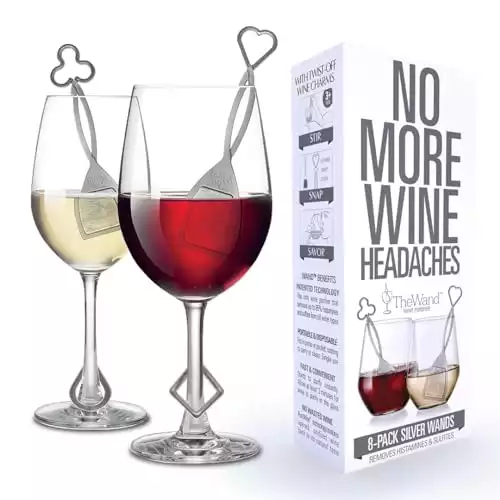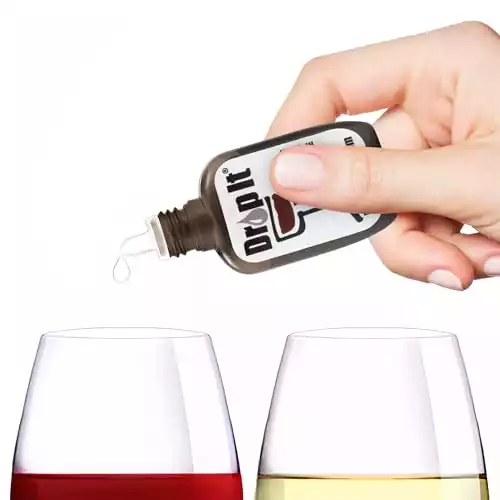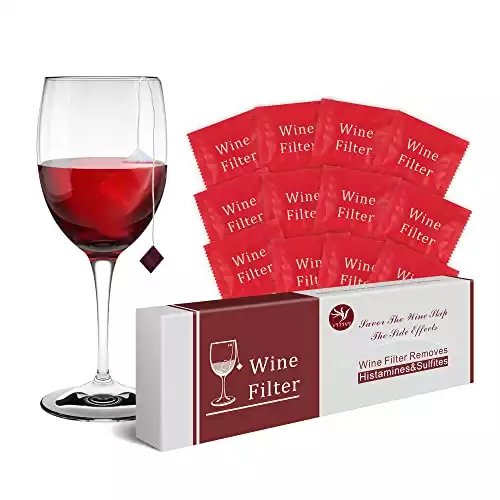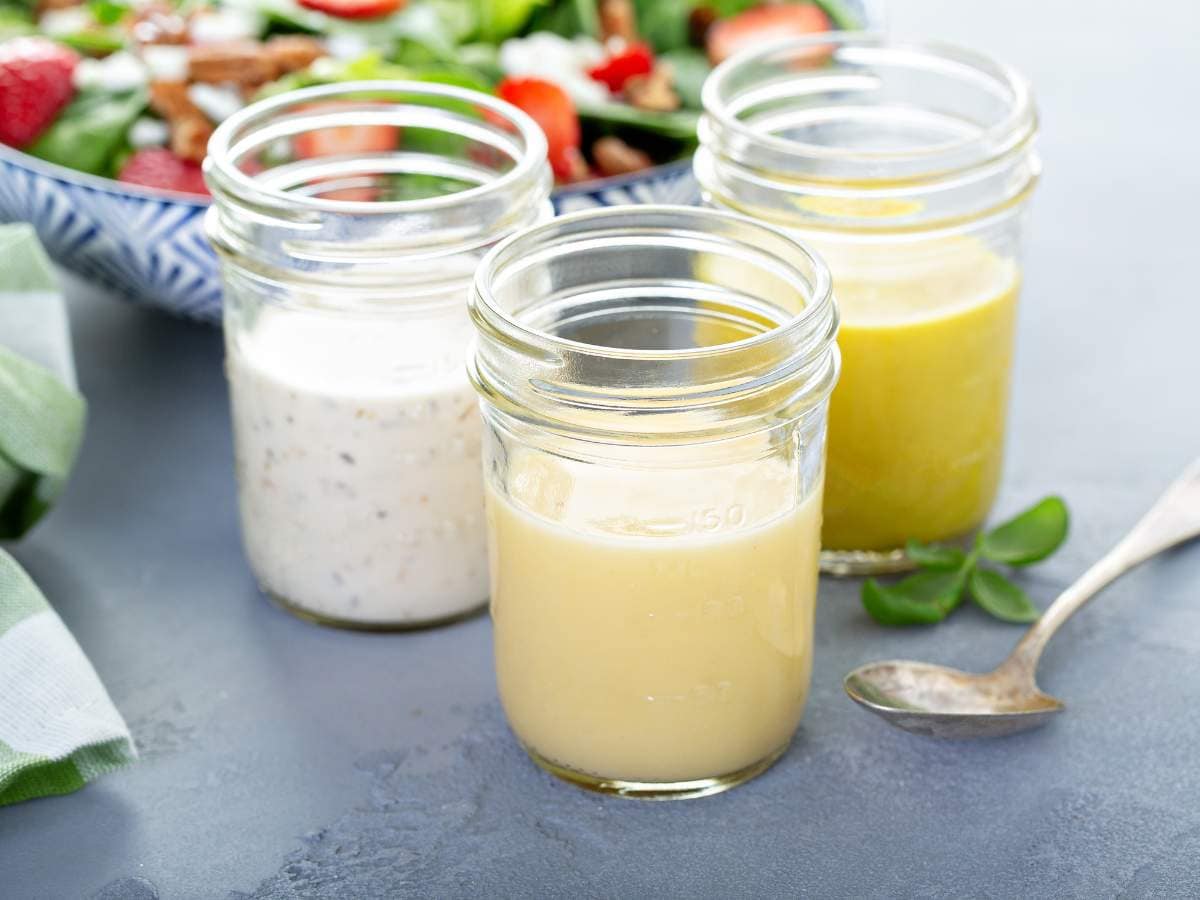Your Guide to Top Low Histamine Wine for Less Headache
Primal Edge Health participates in the Amazon Services LLC Associates Program and other affiliate programs and therefore, may collect a share of sales or other compensation from the links on this page. This comes at no additional cost to you, and all the prices and availability are accurate at the time of publishing.
Do you suffer from headaches and other allergy-like symptoms almost every time you drink wine? If the answer is “yes,” you might need to switch to a low-histamine wine.

Histamine intolerance can mimic the symptoms of an allergic reaction and—if you’ve had a bit too much to drink—the tell-tale signs of alcohol intoxication, such as nausea, vomiting, and headaches. Before you chalk it down to the alcohol content, have you considered the histamine content of your wine?
Table of Contents (click to view)
What is Histamine?
Think about enjoying a nice glass of red with your juicy rib roast. Everything’s going fine, and then your skin starts itching. A rash could show up out of nowhere, or your head could start to pound. Could it be the alcohol? Or is it because your wine has a high histamine content?
The American Academy of Allergy Asthma & Immunology (AAAA) defines histamine as an amine released by your immune system as a response to foreign proteins (allergens), causing allergic and anaphylactic effects. Allergens do not always cause adverse reactions, but if you are sensitive to a particular protein, your immune system may overreact to it.
Microorganisms with the enzyme histidine carboxylase turn the amino acid histidine into histamine during the fermentation process, specifically malolactic fermentation. This is why fermented foods like alcoholic beverages, sauerkraut, and pickles naturally contain histamine.
All wines have some level of histamines, and there is currently no “zero-histamine” wine on the market. So, if you’re experiencing significant discomfort or allergy-like issues after drinking wine, it might be due to the high histamine content rather than the alcohol as you might assume.

What is Histamine Intolerance?
If you have histamine intolerance, it means your body cannot degrade histamines effectively, causing them to build up. Once the histamine levels in your body reach your particular “threshold,” you may start to experience symptoms.
Histamine intolerance is not the same as a food allergy, although many people confuse the two due to similar symptoms, such as histamine headaches. Histamine intolerance is the result of histamine buildup in the body, while a food allergy is an immune response to specific foods, even if you eat only small amounts of the offending food.
The body produces and releases histamine when you come in contact with an allergen, but certain foods also contain histamines. According to the Histamine Intolerance Awareness organization, various foods and drinks with high histamine content include:
- Alcohol
- Pickled or canned foods
- Aged cheese
- Eggplant
- Smoked meats
- Shellfish
- Rice vinegar
- Snacks with a lot of salt and preservatives
- Chocolate and other cocoa products
- Beans and pulses
Symptoms of Histamine Intolerance and Sensitivity
Histamine intolerance symptoms are similar to those of food allergies and sensitivities. Talk to your doctor to find out what kind of intolerance you have if you experience the following symptoms:
- Bloating
- Headaches or migraines
- Diarrhea
- Nausea or vomiting
- Rashes or hives
- Runny nose or nasal congestion
- Skin flushing
- Irregular heartbeat
- Low blood pressure
- Watery eyes
- Wheezing
- Swelling
- Itchiness
- Heartburn
- Painful menstrual cramps
- Sleep problems
- Shortness of breath
Understanding Histamine Levels in Wine
All wines have histamines. However, certain factors affect the histamine level in wines. According to Harvard Medical School, red wines are usually fermented with grape skins or seeds, which increases the tannin content and creates more histamine.
Moreover, a study on allergic and intolerance reactions to wine pointed to uncontrolled malolactic fermentation, poor cellar hygiene (e.g., poorly maintained oak barrels), and other environmental factors as potential reasons for high levels of histamine in certain wines. These issues may be present in poorly regulated winemaking facilities.
Does this mean that higher-quality wines contain less histamines? Possibly, but not necessarily. An Australian research group studied 100 high-quality red wines from seven cultivars and found that histamine levels varied significantly, regardless of the grape variety. They concluded that factors like the quality of the grapes, bacterial strains, and yeast strains affect the histamine content in wine more than the types of wine.
Luckily, avoiding the negative effects of histamine intolerance can be as simple as avoiding high-histamine foods. For example, you can switch to low-histamine breakfast recipes for a better start to your day or focus on ingredients like low-histamine vegetables, fruits, and grains for allergy-free meals.

How to Choose a Low-Histamine Wine
Finding a low-histamine wine can be tricky, especially since winemakers don’t exactly put the histamine content of their products on the label. Not to worry, here are some useful tips if you want to avoid the dreaded effects of histamine intolerance, especially after a nice low-histamine dinner:
- Choose white or sparkling wine. White wines and champagne typically contain less histamine than red wines because it’s primarily made with the juice of the grape (without the skin), hence lower tannin content. I recommend Pinot Gris, Sauvignon Blanc, or Prosecco.
- Opt for high-quality wine. Why not splurge on a higher-quality bottle of wine? It doesn’t have to be decades old, but wine made by a reputable winemaker is more likely to contain higher levels of histamine caused by process-related issues. Alternatively, you can choose natural wines, which are more likely to have lower levels of histamines due to fewer additives.
- Go for younger red wines. If you want to avoid red wine headaches, younger reds usually have lower histamine content. I suggest a nice bottle of Pinot Noir, Cabernet Sauvignon, or Merlot with a side of low-histamine snacks like fresh cheeses and fresh fruit.
I like enjoying my wine with low-histamine recipes to reduce the risk of symptoms as much as possible. For example, I prefer having a glass of white with some veggies topped with low-histamine salad dressing.
If you still experience symptoms despite switching to a low-histamine wine, contact your healthcare provider immediately. You might have an underlying sensitivity or intolerance that’s causing your issues.
Best Histamine Removers
Sometimes, we form an attachment to our favorite brand of wine. I get it, it’s hard to switch to a different wine after sticking to your go-to bottle for years.
Luckily, you don’t have to suffer through the symptoms of histamine intolerance to enjoy your favorite glass of red, white, or bubbly. Consider using these histamine removers to reduce the histamine content in your wine:
PureWine Wine Wands Purifier
One of the most popular are wine wands. These work like magic wands – they’re convenient, easy to carry, and work well.
There are many wine wands out there, but I find PureWine Wine Wands Purifier works better for me. I’m not a wine person, but when I drink on special occasions, my nose feels congested, and my head hurts the next morning.
With this tool, I no longer experience congestion when drinking red wine or the dreaded “wine hangover” the next day. Additionally, it doesn’t affect the taste of the wine. I love being able to enjoy a glass or two without allergic reactions.
Drop It Wine Drops
If you want a more compact histamine remover for your wine, go for wine drops. Just a few drops of it (depending on your liking), and you can enjoy your glass of wine without unwanted attention and, of course, the uncomfortable histamine reactions.
For me, I find Drop It Wine Drops more effective than other wine drops. In just 20 seconds, this can effectively remove sulfites and tannins in all types of wines, including those with high histamine levels.
At first, I wasn’t keen on trying this since it is made of food-grade hydrogen peroxide, natural egg white protein, and sunflower lecithin, since I’m allergic to egg whites. However, my husband didn’t want to bring a wand out to dinner, but these compact drops fit easily in his pocket.
Plus, I was afraid that using these drops might change the taste of the wine. Surprisingly, they didn’t! Even if I add a few more drops of it, it doesn’t affect the flavor of the wine. Just make sure you don’t have any sensitivities to egg whites and other ingredients before taking these for a spin.
Wine Sulfite Filter
Another compact histamine remover is wine sulfites. This looks like a tea bag that you can easily carry around, but it might feel awkward whipping this out at a restaurant. It’s great for at-home use, though, and does the job well.
For me, Wine Sulfite Filter works the best among the wine sulfites in the market. It doesn’t change the taste of my wine and I only need three minutes for it to take effect.
I also don’t experience any allergic reactions to wine when using this filter. With this, I can drink more wine without worrying about any headaches or other issues the next day.
Conclusion
A low-histamine wine may be the answer to those pesky “hangovers” you keep experiencing no matter how little you drink. Go for white or sparkling wine, splurge on higher-quality brands, or—if you can’t resist a red—use a histamine remover for DIY low histamine wines.
Feel free to explore our blog for more nutrition-related tips and mouthwatering recipes you can pair your low-histamine wines with. Don’t forget to share this article with your fellow wine enthusiasts, too!











My mind has just been blown… I always felt like wine didn’t agree with me but never thought about why. It always makes me get flushed and gives me headaches. Even if I just have one glass, I have a lot of trouble falling asleep at night. I think I need to run out and get myself a low histamine wine and see what happens!